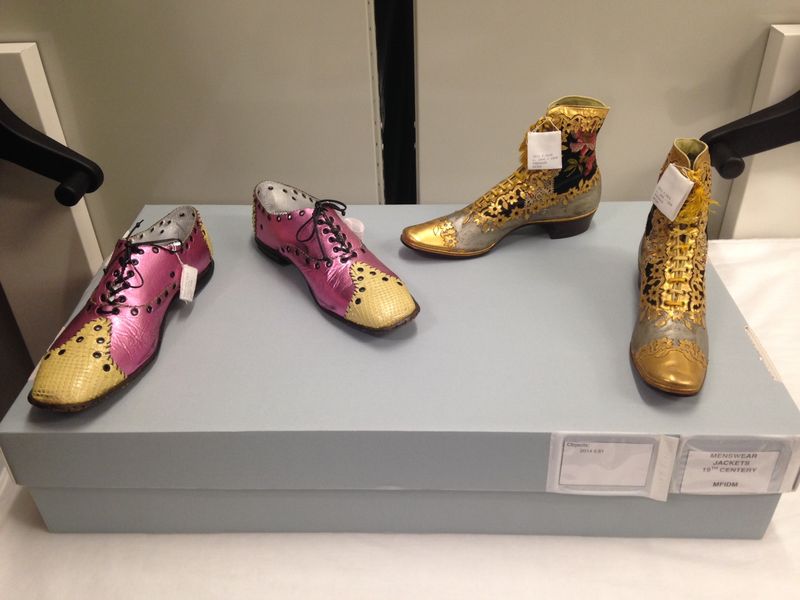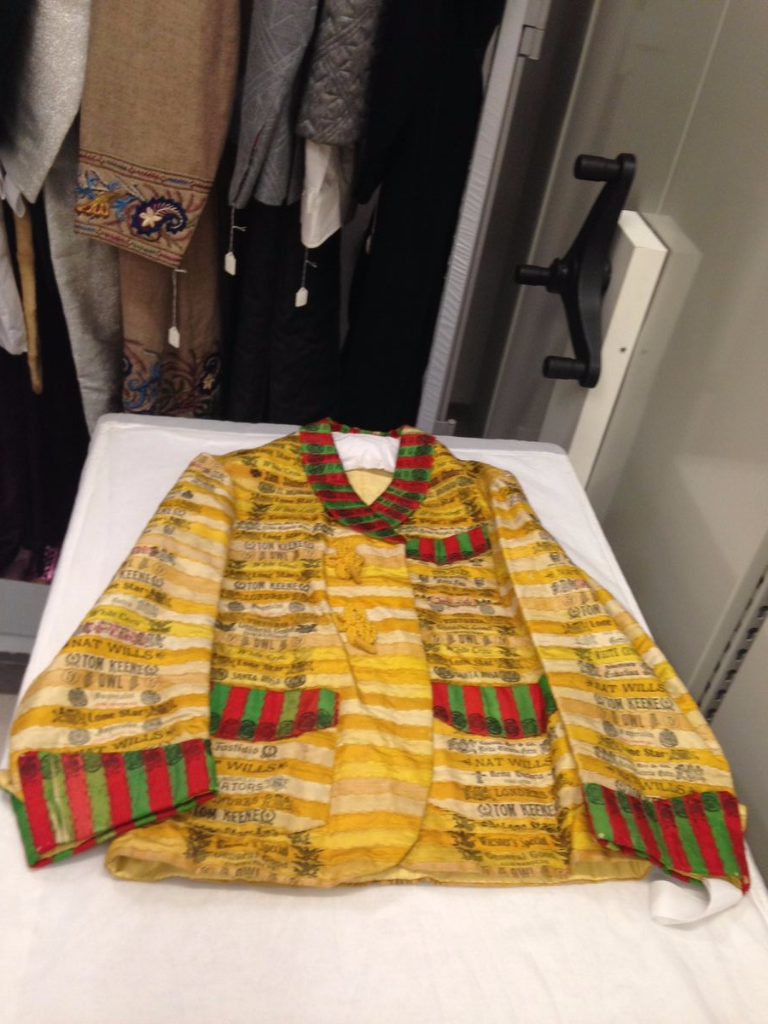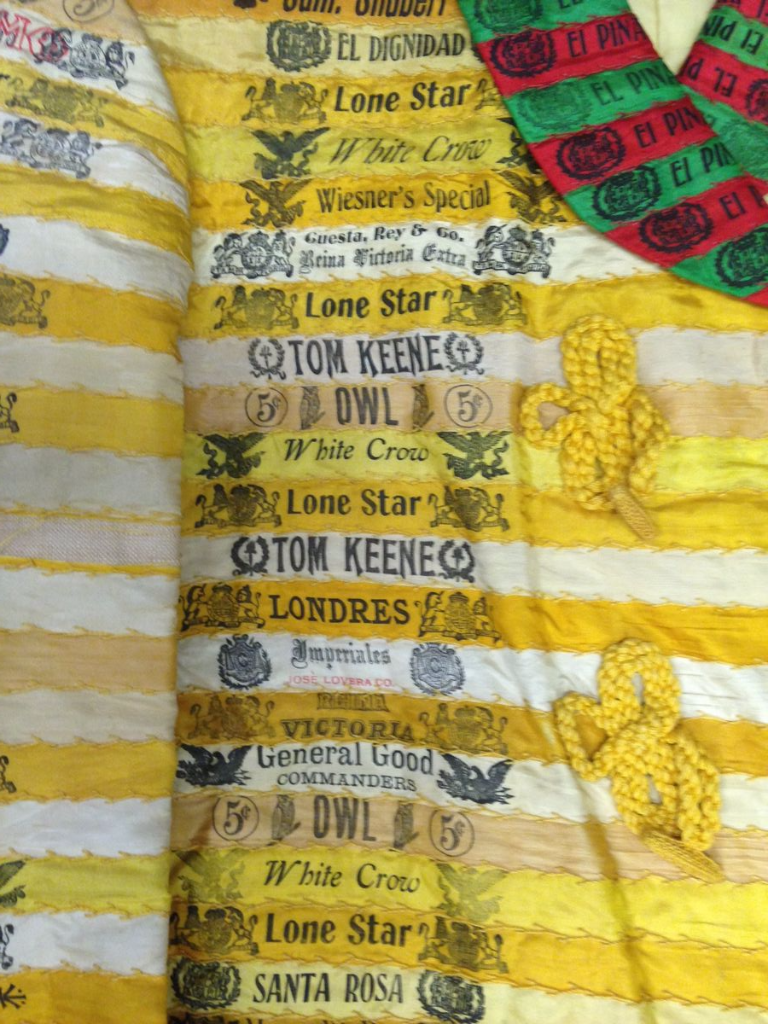Confessions of a Curator: Christina Johnson
The FIDM Museum blog is excited to introduce a new column called "Confessions of a Curator." In this feature, our Curators Kevin Jones and Christina Johnson will speak directly to our readers about their current research projects, the challenges and joys of curating, and the process of building a robust fashion collection. Go behind-the-scenes with the Curators as the Museum prepares for upcoming exhibitions, and learn about their personal career paths. We also want to hear from you - if you have questions for our curatorial team or suggestions for blog topics, feel free to get in touch with us by commenting on our posts or sending an email.
We hope you enjoy this first installment of "Confessions of a Curator" by Christina Johnson!
****************************************
Enjoying Curating
I’ve been thinking a lot these days about the time I spend at the Museum--what I enjoy doing and what I could do without! Probably because it’s my thirteen-year work anniversary this month, and my time here has gone by quicker than I could have ever imagined. One of the activities I enjoy the most here is curating exhibitions. Right now, I’m working on ManMode: Dressing the Male Ego for our History Gallery. It will include nineteen mannequins and invisible mounts, plus four cases of objects spanning three centuries.
Left: Snakeskin and metallic leather oxfords, Lincoln's New York, 2007, Gift of Lincoln's New York, 2007.904.1AB
Right: Metallic leather and silk brocade boots, possibly Harry William Morris, England, 1890s, 2012.5.5AB
I’ve found curating an exhibition often boils down to three basic activities: visualizing, organizing, and interpreting—all of which are fun for me.
Curator Kevin Jones and I collaborate on most exhibitions, so for this one, we started with the really basic idea that we wanted to showcase some of our best menswear (knowing LAMCA’s Reigning Men was opening this year certainly influenced that decision!). First, we brainstorm about what objects could be included, and then visualize what looks good together.
It became apparent our favorite menswear objects are all in-your-face statement pieces. We started thinking about what linked the ensembles together and what the wearers were aiming to express, and decided that at the end of the day, the selected grouping is all about ego— that aspect of the personality that demands attention, especially when we’re talking about confidence or boldness, without apology!
I’m not very computer savvy so I tend to do a lot of my visual brainstorming using the basics: paper, a pencil, and little cutout photos of the potential objects to be included. It’s not high tech, but it works.
The sky is the limit when you’re visualizing an exhibition. It’s best to throw out budget challenges, time constraints, and conservation issues during this phase. Don’t hold back on grand ideas—they don’t cost anything! Funnily enough, some of my best exhibition ideas come to me when I’m driving to work—I always have to rush into the office to write them down!
It’s inevitable that you’ll have to face reality as a curator. Budgets mean there’s always a limit on what can be spent to support your ideas, so prioritize what’s most important. There are space constraints, mannequin and mount problems, and never, ever enough time. That’s why being organized and being a planner is a blessing!
A tip for basic planning: start that object list early on! Include a photo of the object, correct ID numbers, measure everything, jot down condition issues, leave room for notes. Then, give this document to everyone on your team for input. Being a fantastic curator takes equal parts vision and common sense.
Interpreting objects in writing —through text panels, publications, and lectures— is the heart of a curator’s job. But it’s the object itself—the visual, tangible ‘thing’ — that should always take the lead. Go to an exhibition and watch how people take it in. You’ll see visitors always look first and read second. I know I get so excited to convey everything I’ve learned about a particular piece in its text panel, but it’s easy to write so much that it’s overwhelming for the reader. Editing is paramount. Better to focus on one succinct topic or thought—base the writing in scholarship, but make the words accessible and inviting. Think sound bite, not essay. When I think about what to include on a text panel for anything, I always come up with questions I would want answered.
Cigar Silks Smoking Jacket
1880s
2014.5.81
For example, when I first sat down with this smoking jacket made of cigar silks, I wanted to know (and this is really stream of consciousness): Is this 1870s or 1880s? What’s the deal with this fad of silks being utilized as clothing and accessories? What exactly is a cigar silk and how was it used in packaging? Why are they yellow? Did only women who made these items? Other than wearables, what else was made with the silks? Are there patterns or directions in periodicals or books about how to make these smoking jackets? Wouldn’t it be great if I could find the pattern? Could I find out more about the cigar companies mentioned on the silks? Did the design of the silks change due to consumer demand? How is this jacket related to our theme of ego expressed through clothing? Yes, I tend to be inquisitive.
You’ll have to come to the exhibition to find out what questions I ended up answering in my research, and see some really great menswear. I hope you enjoy visiting ManMode: Dressing the Male Ego as much as I enjoyed curating it!





